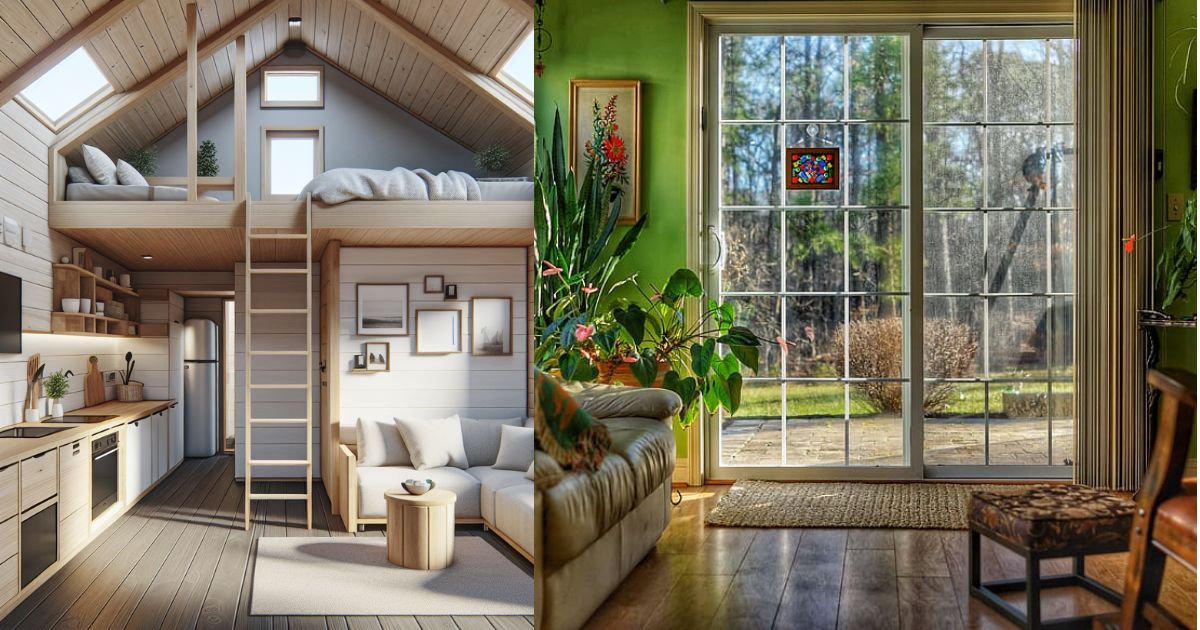In today’s world, where environmental concerns are increasingly pressing, making your home eco-friendly is not just a trend but a necessity.
By adopting sustainable practices and incorporating eco-friendly features, you can not only reduce your carbon footprint but also create a healthier living environment for you and your family. Here are 9 effective ways to Eco-friendly home decor solutions to make your home more eco-friendly:
Eco-friendly home decor solutions: 9 Ways to Make Your Home Eco-friendly

1. Switch to Energy-Efficient Appliances
One of the most impactful steps you can take towards an eco-friendly home is to replace old, energy-guzzling appliances with energy-efficient ones.
Energy-efficient appliances consume less electricity, which not only lowers your utility bills but also reduces greenhouse gas emissions.
Look for appliances with the Energy Star label, indicating that they meet strict energy efficiency guidelines set by the Environmental Protection Agency (EPA).
2. Reduce, Reuse, Recycle
The mantra of “reduce, reuse, recycle” holds true when it comes to minimizing waste and conserving resources. By reducing your consumption, reusing items whenever possible, and recycling materials like paper, glass, and plastic, you can significantly reduce the amount of waste that ends up in landfills.
Embracing these practices not only conserves natural resources but also helps protect ecosystems and wildlife habitats.
3. Install Solar Panels
Harnessing the power of the sun through solar panels is an excellent way to generate clean, renewable energy for your home. Solar panels convert sunlight into electricity, reducing your dependence on fossil fuels and lowering your carbon footprint.
While the initial investment may seem daunting, the long-term savings on electricity bills and the positive environmental impact make solar panels a worthwhile investment.
4. Use Sustainable Building Materials
When building or renovating your home, opt for sustainable building materials that have minimal environmental impact. Materials like bamboo, reclaimed wood, and recycled metal are eco-friendly alternatives to traditional construction materials.
Not only are these materials renewable and biodegradable, but they also often require less energy to manufacture, reducing greenhouse gas emissions.
5. Improve Insulation
Proper insulation is essential for maintaining a comfortable indoor temperature and reducing energy consumption. By insulating your home effectively, you can minimize heat loss in the winter and heat gain in the summer, reducing the need for heating and cooling.
Choose insulation materials with high R-values, such as fiberglass, cellulose, or spray foam, to maximize energy efficiency and comfort.
6. Grow Your Own Food
Home gardening is not only a rewarding hobby but also a sustainable way to produce fresh, organic food right in your backyard. By growing your own fruits, vegetables, and herbs, you can reduce your reliance on store-bought produce, which often travels long distances and comes with a hefty carbon footprint.
7. Conserve Water
Water is a precious resource, and conserving it is crucial for both the environment and your wallet. Simple measures like fixing leaky faucets, installing low-flow showerheads and toilets, and using drought-tolerant landscaping can significantly reduce water usage in your home.
By conserving water, you not only save money on utility bills but also help protect aquatic ecosystems and preserve freshwater resources.
8. Incorporate Smart Home Technology
Smart home technology offers innovative solutions for increasing energy efficiency and reducing waste in the home.
From programmable thermostats and smart lighting systems to energy-monitoring devices and home automation platforms, there are countless ways to make your home smarter and more eco-friendly.
By intelligently managing energy usage and optimizing resource consumption, smart home technology can help minimize environmental impact.
9. Choose Low-VOC Paints and Cleaning Products
Many conventional paints and cleaning products contain volatile organic compounds (VOCs), which can release harmful chemicals into the air and contribute to indoor air pollution.
Opt for low-VOC or zero-VOC paints and eco-friendly cleaning products to improve indoor air quality and protect your health. These products are formulated with natural, non-toxic ingredients that are safer for you, your family, and the environment.
AKSO READ:
- 9 Best Ways to Get a Minimalist Look in Your Home
- Scandinavian interior design Tips:11 Best Tips For Make Your Home Like Wow
Conclusion
Creating an eco-friendly home is not only beneficial for the planet but also for your health, well-being, and finances. By implementing the nine strategies outlined above, you can reduce your environmental footprint, save money on utility bills, and create a more sustainable lifestyle for yourself and future generations.
Remember, every small step towards sustainability counts, so start making changes today and inspire others to join you on the journey towards a greener, cleaner future.
FAQs
1. How much money can I save by switching to energy-efficient appliances?
The amount of money you can save depends on several factors, including the energy efficiency of your appliances, your current energy usage, and the cost of electricity in your area. However, studies have shown that households can save hundreds of dollars per year by upgrading to energy-efficient appliances.
2. Are solar panels suitable for all homes?
While solar panels can be installed on most homes, factors such as roof orientation, shading, and local regulations may affect their feasibility. It’s best to consult with a solar energy provider to determine if your home is suitable for solar panel installation.
3. How can I start composting at home?
To start composting at home, you’ll need a compost bin or pile, organic waste such as food scraps and yard trimmings, and a balance of green and brown materials. There are many resources available online that provide detailed instructions on how to set up and maintain a composting system.
4. What are some easy ways to conserve water in the home?
Simple water-saving tips include fixing leaks, taking shorter showers, turning off the tap while brushing teeth or washing dishes, and using water-efficient appliances and fixtures. Additionally, collecting rainwater for outdoor use and landscaping with native, drought-tolerant plants can help reduce water consumption.
